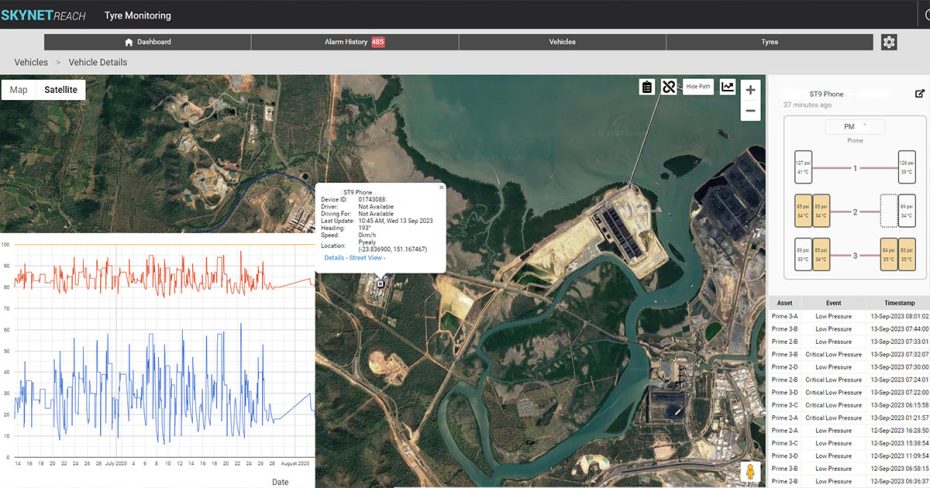In the bustling transport industry, nothing gets a fleet on the road faster and keeps it running longer than efficient and effective tyre management. At the heart of this strategy lies the groundbreaking Tyre Temperature and Pressure Monitoring System (TPMS). While its utility has been acknowledged globally, what truly sets it apart are the multi-faceted advantages it offers, especially in domains like Dangerous Goods transport, Explosive transport, Flammable mine sites, and fuel transport.
Why TPMS Stands Out
1. Real-time Quality Monitoring: TPMS offers a real-time lens into the performance and potential failures of every tyre in your fleet. With the capability to read all wheel positions dynamically, it ensures that the status of your fleet’s tyres isn’t just a periodic check, but a continuous surveillance.
2. Enhanced Fleet Efficiency: In an industry where time is money, TPMS reduces the time trucks spend off-road. Timely data can ensure timely maintenance, getting your vehicles back on the road faster and optimising on-the-go operations.
3. Safety First: Particularly crucial for vehicles transporting dangerous goods or operating in flammable environments, TPMS can be the first line of defence against catastrophic failures. By catching anomalies early, it can prevent disastrous events like major fires and equipment destruction.
4. Cost Savings: On-time performance isn’t just about punctuality; it’s about the bottom line. With TPMS, the tangible benefits extend beyond safety, directly influencing your balance sheet by reducing unforeseen maintenance costs and prolonging tyre life.
Key Features of TPMS
- Rim Sensors: TPMS boasts sensors dedicated to monitoring the rims, offering an extra layer of safety and efficiency.
- Comprehensive Measurements: From internal air pressure to ambient air temperature, TPMS provides a holistic view of tyre health.
- 24/7 Real-time Monitoring: Tyres don’t operate on a 9-to-5 schedule, and neither does TPMS. Continuous monitoring ensures that anomalies are caught at any time of day or night.
- Precision: Know exactly where the issue is with tracking of the exact tyre and axle position.
- Integration Capabilities: For fleets already utilizing telematics, TPMS can be seamlessly integrated, making it a natural extension of your fleet management toolkit.
- Instant Warnings via REACH® Fleet: Real-time alerts mean immediate action can be taken, averting potential crises before they escalate.
- Long-lasting: With a battery life of 5-7 years, TPMS is a long-term investment in fleet safety and efficiency.
Conclusion
While TPMS might not be a contractual requirement for every transport operator, its value proposition makes it an indispensable asset for modern fleets. From safeguarding assets and personnel to boosting operational efficiency and profitability, the Tyre Temperature and Pressure Monitoring System is revolutionising the road ahead for the transport industry.

